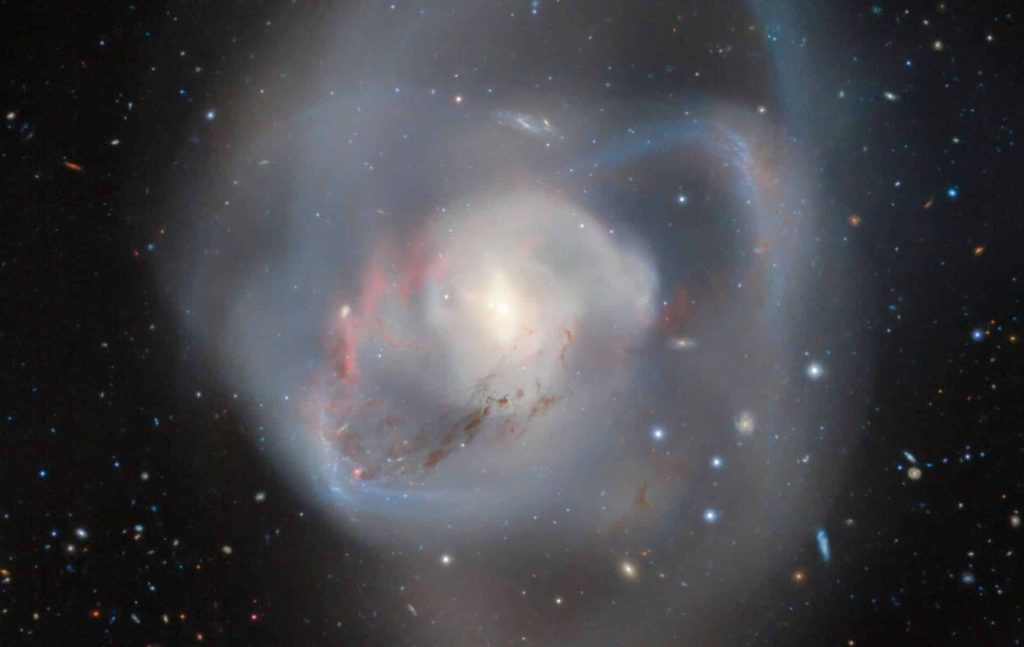“Cotton candy” is actually nothing more than a complete mess, created after a collision between two galaxies.
Once upon a time, a spiral galaxy with almost well-defined spiral arms could be found in the location of this cotton candy. But a collision and merger with another galaxy has thrown that once well-ordered galaxy into complete disarray, leaving it more like chaotic cotton candy.
Dust, gas and black holes
The outer edges of this cosmic cotton candy are made up of interstellar dust and gas. Within it we find the still merging cores of what were once two galaxies. At its heart are two supermassive black holes. One black hole will be 154 million times more massive than our Sun, while the other has about 6.3 million solar masses.
Another merger
These black holes have always ruled alone at the heart of one of the two colliding galaxies. But after their galaxies collide and merge, they are forced (temporarily) to live together. This is not very comfortable yet; The distance between the black holes is still about 1,600 light-years. But they are expected to move closer and closer together, and eventually – in about 250 million years – they will collide and merge into an even more massive black hole.
Severe collision
While the cosmic cotton candy may seem completely peaceful, the resulting collision was not peaceful at all. Stars and nebulae were ejected and then sucked back in by the gravity of supermassive black holes.
Young stars
But violent clashes do not only lead to chaos. The collision of gas clouds also creates an ideal environment for star formation. This is exactly what we see happening in bits of cotton candy; There are countless bright, newborn stars. In 23 places, the rate of star birth is so high that researchers suspect that globular star clusters — enormous collections of stars, sometimes numbering hundreds of thousands of stars — are forming there.

However, everything comes to an end. Hence also the chaos and star formation in this part of the universe. The cotton candy we find there now is expected to eventually transform into an elliptical galaxy composed mainly of older stars and with hardly any new stars forming.
It’s a completely unattainable proposition, both in time and space. For example, the collision that led to this cosmic cotton candy actually occurred about a billion years ago, and it will take some time before it completely transforms into an elliptical galaxy. Cosmic cotton candy is about 90 million light-years away from our Milky Way Galaxy. However, this far-fetched display certainly has implications for our galaxy. Billions of years later, our spiral galaxy will also collide and merge with a neighboring galaxy: the Andromeda Galaxy. And this cotton candy gives us insight into what lies ahead for our galaxy.

“Coffee buff. Twitter fanatic. Tv practitioner. Social media advocate. Pop culture ninja.”











More Stories
Which can cause an increase in nitrogen.
The Central State Real Estate Agency has no additional space to accommodate Ukrainians.
The oystercatcher, the “unlucky national bird,” is increasingly breeding on rooftops.